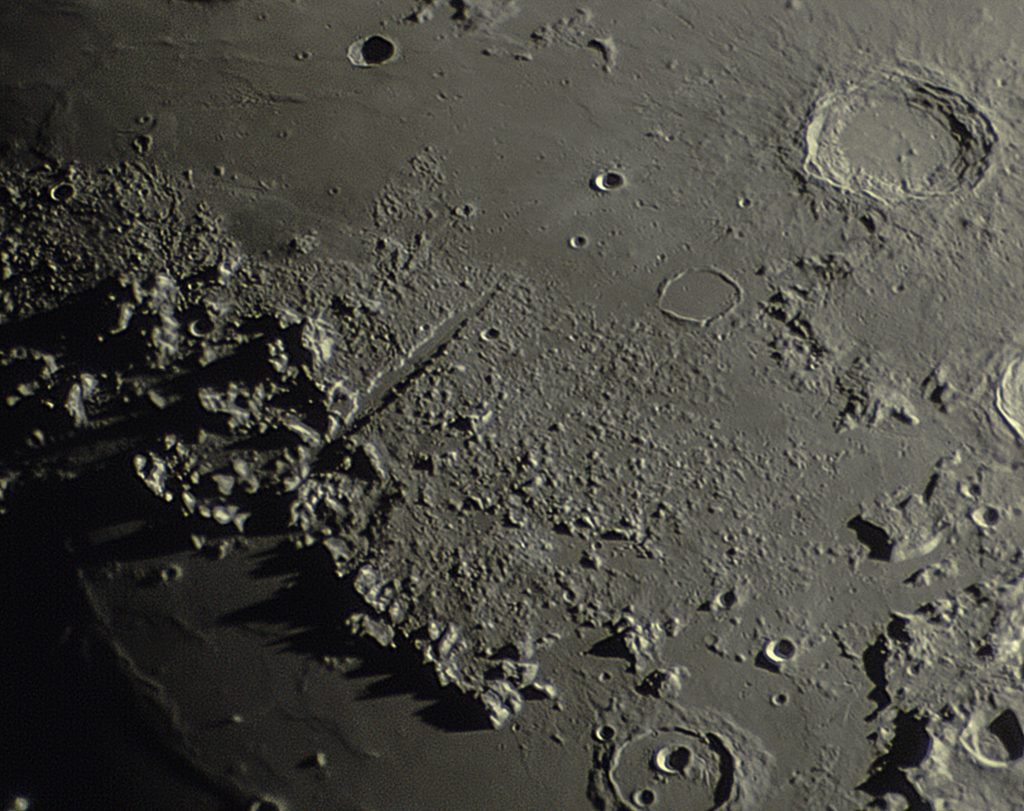
Yesterday I took out the 200mm reflector in a very cold wind to take some close-up images of the moon. I am quite happy to have captured the rille in the alpine valley quite distinctly.
Read More
Yesterday I took out the 200mm reflector in a very cold wind to take some close-up images of the moon. I am quite happy to have captured the rille in the alpine valley quite distinctly.
Read More

After a long spell of clouds, snow and rain, clear skies have returned. Apart from the streak artefacts in the background I like this image a lot, this is my first properly focused image with the Baader h-alpha filter.
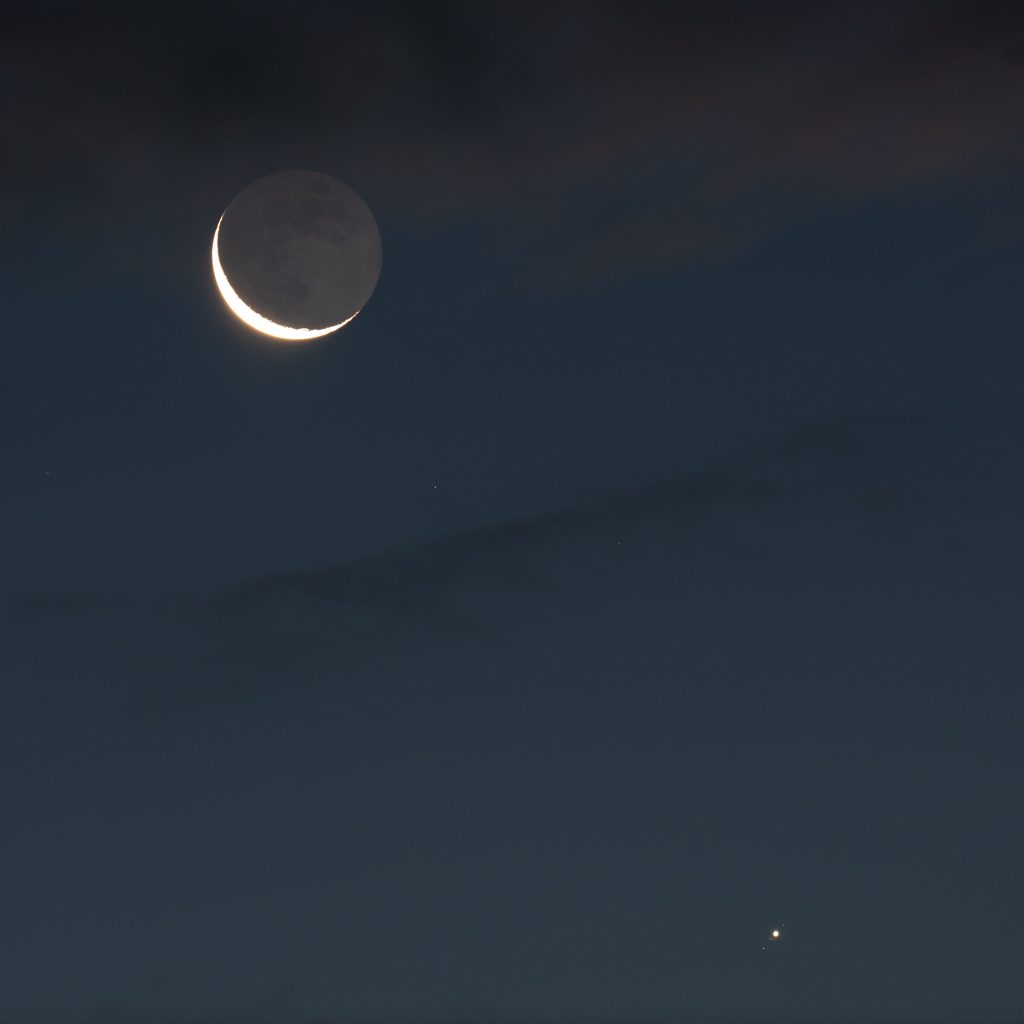
When my wife noticed the beautiful thin crescent moon in a gap in the clouds I rushed to the deck on our roof, to take a picture of the conjunction of the Moon and Jupiter. At first I went bare-footed, but after a few seconds I couldn’t stand the snow under my bare soles, and put on some slippers. But I was still only wearing my sleeping attire, boxer shorts and a worn-out T-shirt. Temperature was -5°C.
Read More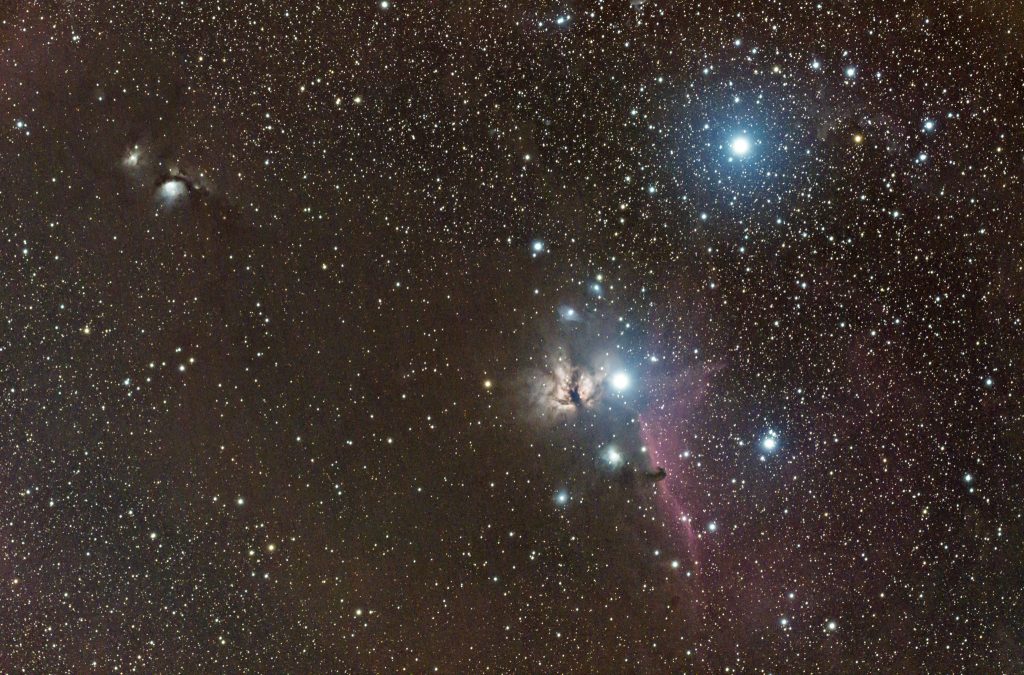
On December 26th we were invited to christmas dinner at my sisters place. I brought the Vixen Polarie, the Takahashi FS-60CB and the Nikon D750 to do some astrophotgraphy during the evening.
The image above records some faint nebulosity across central Orion. From the horsehead nebula B33 silhouetted against IC434 to the flame nebula NGC 2024. In the upper left, the M78 nebula with its surrounding NGC objects is also visible. In the corner a hint of Barnards loops is discernible
Read More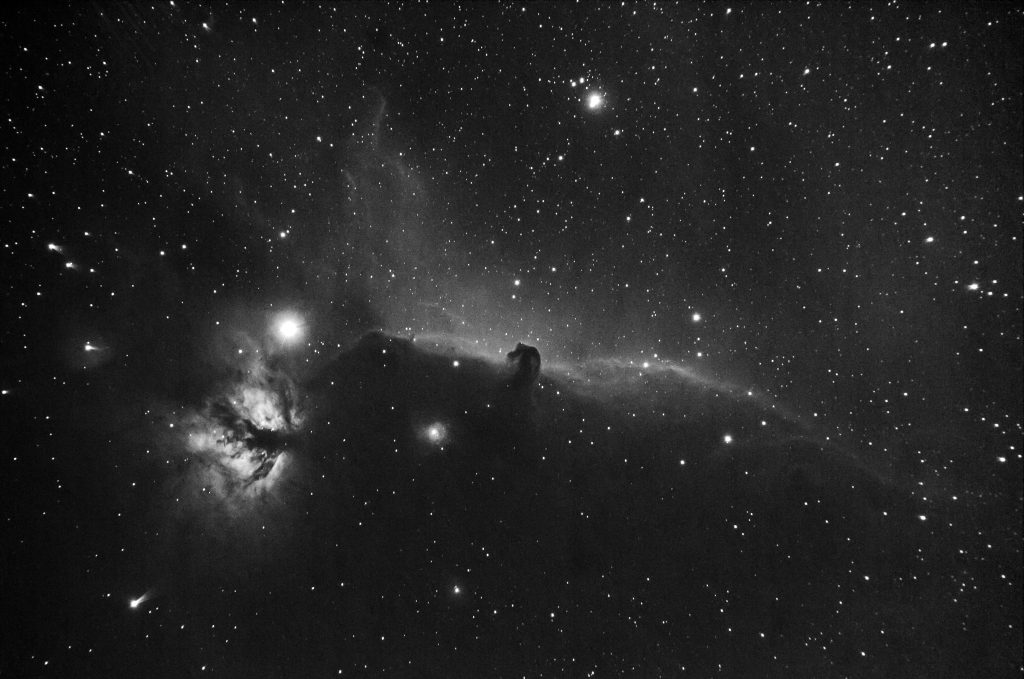
Barnard 33 is the horse-head shaped dark cloud silhouetted agains the glow of excited hydrogen which goes by the name of IC434. To the left is the Flame Nebula NGC2024, which is an odd nebula, because it is orange, and apparently a mixture between reflection and emission nebula.
Read MoreToday I used a break in the clouds to test how the astro-modified Nikon D7000 works with a h-alpha Filter. As the weather was very unstable, I didn’t set up the laptop for guiding, so some images were unusable due to trailing and passing clouds and full cloud cover at the end of the exposure resulted in oly 83x30s unguided exposures. Which way too short, but I am happy with the result under these circumstances.
I was actually heading to bed when I noticed, that the sky cleared up enough to try to photograph Comet 64P/Swift-Gehrels.
As I wanted to create an image that included the Andromeda Galaxy, I used the 70-200 zoom and set it at about 130mm.
On November 5th I had the opportunity to do another test, this time using the 300mm lens, I also used the California Nebula as the target.
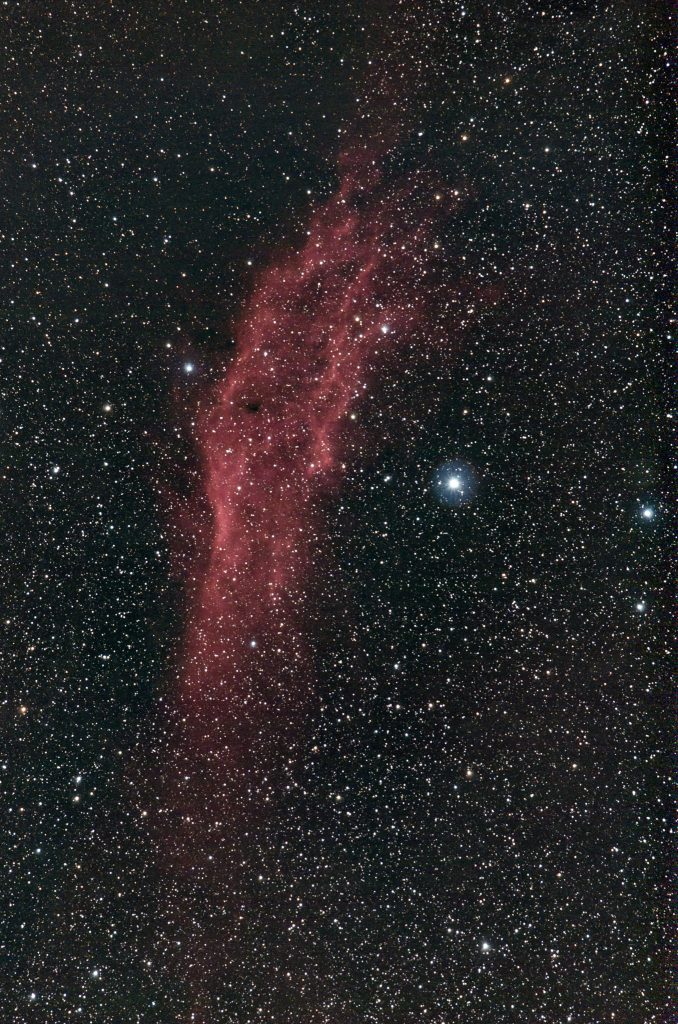
NGC1499, the California Nebula, 192x30s (1h 21min), Nikon D7000a, AF-S NIKKOR 300 mm 1:4E PF ED VR, calibrated in Regim, processed in Fitswork, Photoshop and Lightroom. Mount: Vixen Polarie.
The California nebula is hydrogen gas which is irradiated by the intense UV radiaton from Xi Persei, the bright star near the center of the image. It is about 1250 light years distant and is one of the intrinsically brightest and hottest stars visible to the unaided eye. It weighs in at about 40 solar masses. The surface temperature is a whopping 35000 Kelvin.